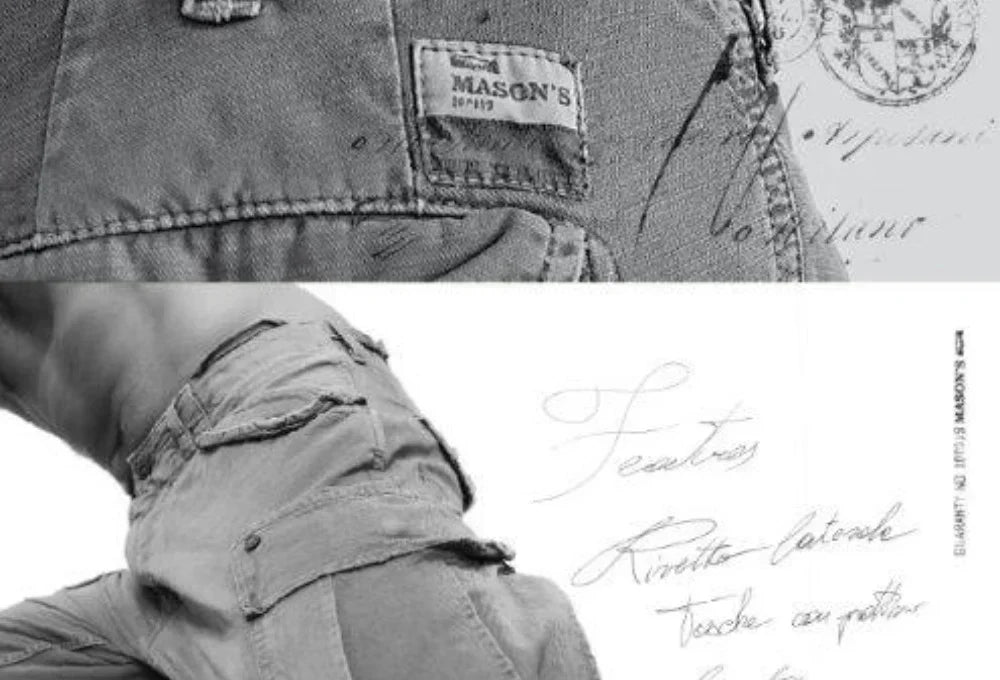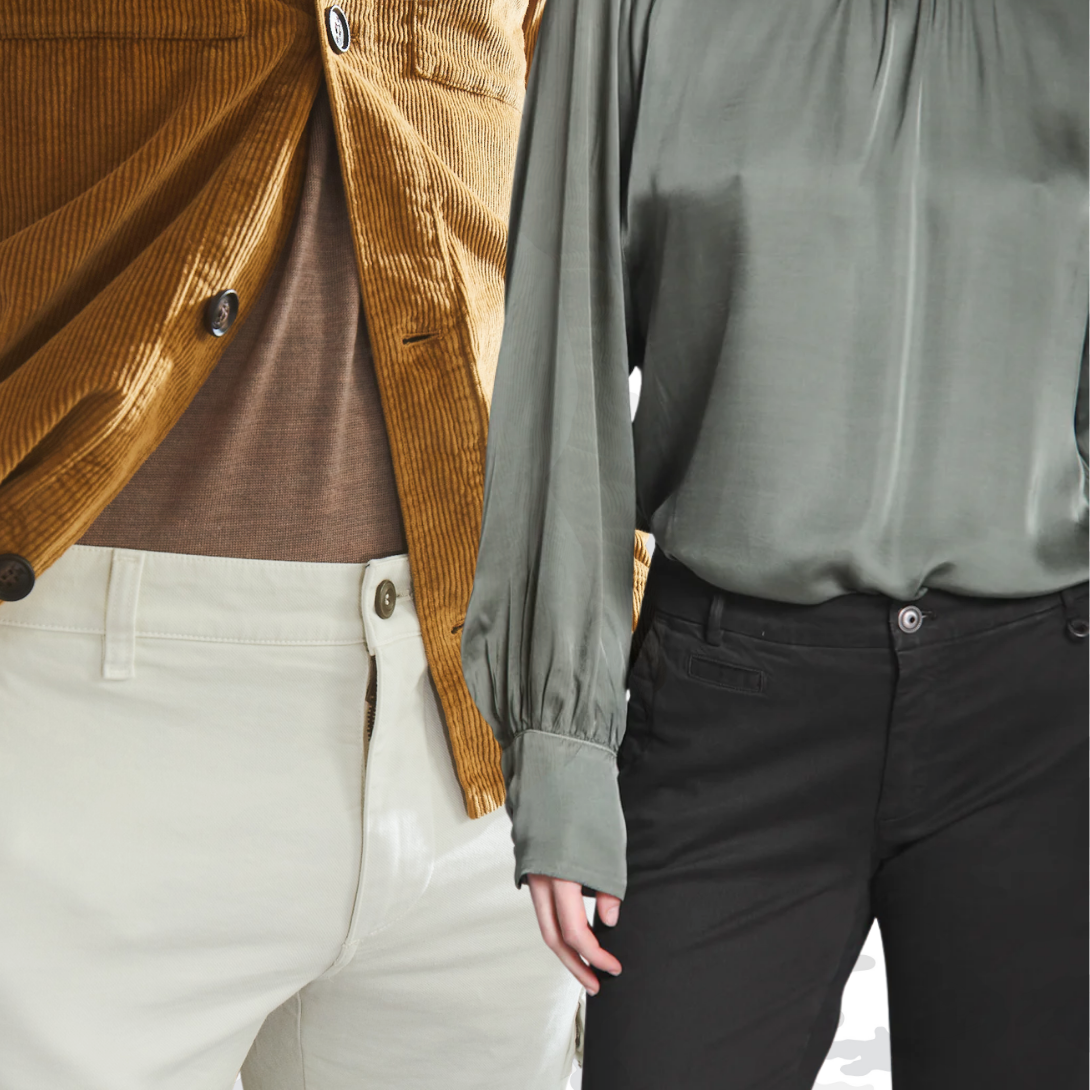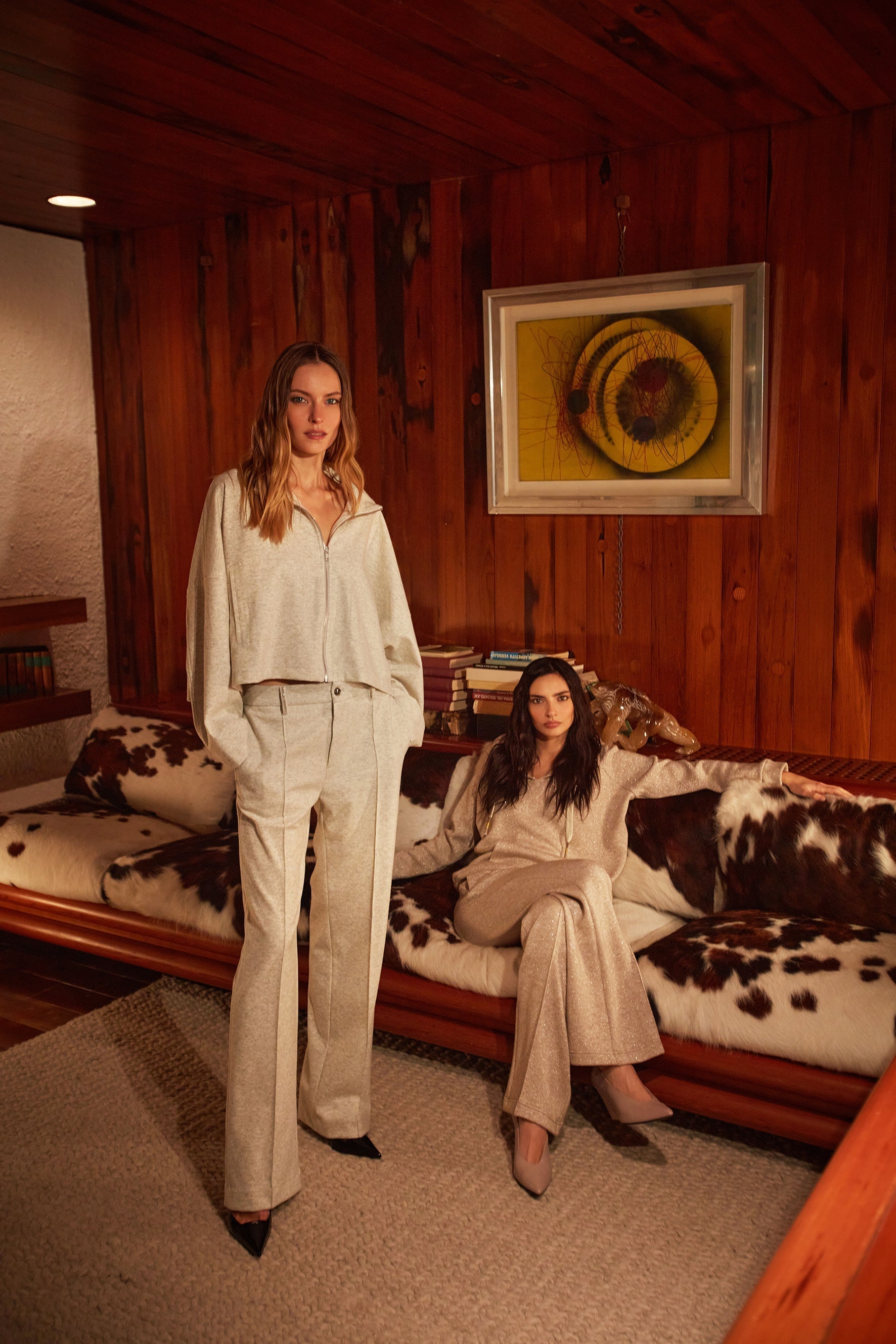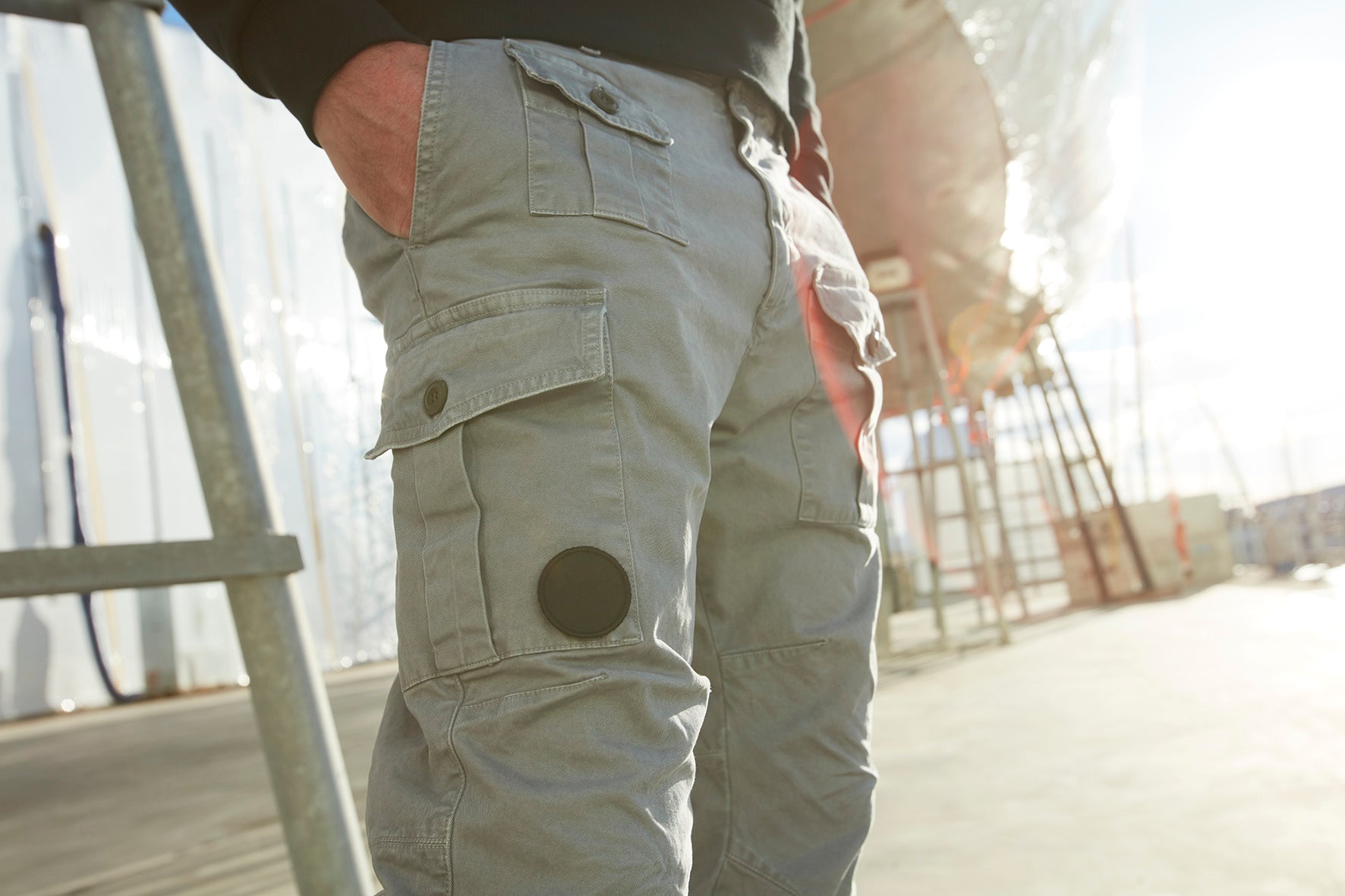Mason’s: History, Tradition and Innovation

Mason’s wasn’t born in 1974. It was built. But to understand what it is today, we need to go back — to Carrara in the 1950s, to a small tailor’s workshop where a man named Vilmo Martini crafted garments with the precision that only those who have worked with fabric all their lives can possess.
That atelier was more than a workshop. It was a way of seeing the world: the belief that a garment should be made to last, to adapt to the body, to tell the story of the person who wears it. Vilmo created unique designs in a place where the sea meets the land, where Carrara’s white marble reflects the blue of the Mediterranean. And in that workshop, his son Giorgio grew up breathing the art of craftsmanship.
1974: the journey that changed everything
Giorgio Martini didn’t settle for continuing what his father had started. In 1974, he set off for South America. It wasn’t a leisure trip — it was a quest. And in Colombia, he discovered something that would forever change his vision: garments once worn by the Colombian Liberation Army.
Those uniforms weren’t beautiful in the conventional sense — they were functional. Camouflage jackets built to blend in, field trousers with pockets designed for endurance, fabrics that could withstand wear and harsh climates. But within that functionality, Giorgio saw something deeper: an aesthetic principle hidden in necessity. Discipline as a form of freedom. The uniform as a metaphor for individuality.
He returned to Italy with a clear idea. He didn’t want to replicate those uniforms — he wanted to translate them. To take that principle — function becomes form — and bring it into the Italian tailoring tradition. That’s how Mason’s was born.
Even the name is a declaration: it comes from the historic San Francisco cable car line, running since 1873 up the city’s steep streets. A vehicle that unites tradition and motion, endurance and urban adventure — exactly what Giorgio wanted to build.

The trouser: from product to manifesto
From the very beginning, Mason’s focused on one garment: the trouser. Not out of limitation, but choice. Because the trouser best represents the balance between function and form, between comfort and structure, between everyday life and elegance.
Every Mason’s trouser is born from a process Giorgio inherited from his father and refined with almost obsessive precision. It begins with the pattern, drawn and redrawn until proportions are perfect. Then comes the first prototype, entirely handmade. It’s tested, analyzed, refined — and redone.
But a trouser isn’t only about cut. It’s about color, material, personality. And that’s where Mason’s began to experiment.
The 1980s: the Libertador fabric
The 1980s marked a turning point. Mason’s developed the Libertador fabric: a gabardine made with double-twisted cottons and premium Colombian yarns. The name was no coincidence — Libertador, like the uniforms Giorgio saw in South America. But this fabric carried that memory into a new territory: exceptional durability combined with Italian refinement.
During this period, Mason’s also introduced a technique that would become its signature: garment dyeing. Instead of dyeing raw fabric, the finished garment is dyed — seams and structure included. The result is a deeper, longer-lasting color and a unique personality for every piece.
Mason’s began experimenting with artisanal treatments: the marbled effect, echoing Carrara’s marble veins; the overdyed effect, giving a lived-in, vintage look. The goal was never industrial perfection — it was authenticity.
The 1990s: the cargo conquers the world
In the 1990s, Mason’s did something unexpected: it took the cargo pant — born for the army, built for function — and turned it into an icon of style.
It wasn’t just about design. It was the idea that a utility garment could become elegant without losing its soul. The cargo by Mason’s kept its pockets, strength, and practicality, but refined its proportions, fabrics, and details. The result: effortless sophistication with military roots.
The success was immediate. Hollywood noticed. Actors, musicians, and artists began wearing Mason’s cargos — not as uniforms, but as statements of style. The pant became a global must-have, and Mason’s established itself as a brand capable of anticipating trends without chasing them.
The 2000s: names become identity
With the new millennium, Mason’s introduced a defining element: every trouser has a name — and every name tells a story.
The Chile, extra slim fit, recalls the brand’s military origins. Evita, relaxed fit, pays tribute to Evita Perón: strength, determination, freedom. Jaqueline, slim fit in velvet, draws from Jacqueline Kennedy’s essential elegance.
Then came the cities: Torino, Milano, New York, Osaka. Not just geographic names, but attitudes — different ways of interpreting tailoring and everyday living. Torino stands for precision and comfort. Milano for sharp refinement. New York for cosmopolitan energy. Osaka for balance and essentiality.
Each name is a statement. Every pant carries a fragment of identity.
Today: the construction continues
Today, Mason’s is led by the third generation — Nicola, Vilmo, and Giuseppe, Giorgio’s sons. They inherited their grandfather’s craftsmanship and their father’s vision, carrying them forward with the awareness that tradition isn’t repetition — it’s evolution.
The iconic fabrics — like Libertador — remain in the brand’s DNA. But alongside them, new-generation materials have emerged: stretch fabrics that adapt to the body, technical fibers that combine comfort and durability. Research never stops.
Since 2012, Mason’s has launched its own e-commerce, enabling direct connection with customers worldwide. The brand is now present in key markets: United States, Italy, Germany, France, and the Netherlands, distributed through top-tier boutiques and international department stores.
Yet Mason’s strength still lies in production. Its highly skilled tailors possess decades of experience — a true heritage of craftsmanship. Their expertise can be felt in every stitch, every seam, every centimeter of fabric.
The future of Mason’s follows the same formula that has guided it for fifty years: combining tailoring, contemporary design, and fabric innovation. Creating aesthetics that serve function. Offering a way of dressing that sacrifices neither quality nor craftsmanship.
Because Mason’s is not just growth. It’s conscious construction — faithful to its roots. A union between industrial evolution and artisanal mastery. A story of passion, craftsmanship, and innovation that continues to be written.
Fifty years after that journey to South America, the principle remains the same: function becomes form, discipline becomes language.
The trouser remains the manifesto. The story continues.

FAQ – Mason’s History
What does “garment dyed” mean for the wearer?
Garment dyeing is a technique that dyes the fully finished, sewn garment — not the raw fabric. For the wearer, it means deeper, longer-lasting color, greater wash resistance, and subtly irregular shades that make each piece unique. No two Mason’s garments are ever identical — that’s not a flaw, it’s a signature.
How to choose the right fit among Mason’s trousers?
Mason’s offers multiple fits to suit every body and style. Extra slim fit (Chile, Milano): close-fitting, follows the body with sartorial precision. Slim fit (Torino, Jaqueline): sleek yet comfortable, balanced between form and wearability. Regular fit (New York): versatile and adaptable, offering maximum freedom of movement. Carrot fit (Osaka): volume at the hips, narrower hem, architectural balance. Relaxed fit (Evita, Malibu): fluid, soft, and comfortable without losing presence. The right choice depends on personal style and body shape.
How long does a Mason’s trouser last?
A Mason’s trouser is built to last for years. The artisanal process — hand-drafted patterns, continuous prototyping, expert tailors — combined with fine materials (from double-twisted Libertador cottons to modern technical fibers) and treatments like garment dyeing ensure durability and timeless appeal. With proper care — gentle washing and attention to labels — a Mason’s trouser improves over time, gaining character without losing shape. It doesn’t fade with trends — it grows more beautiful with wear.






